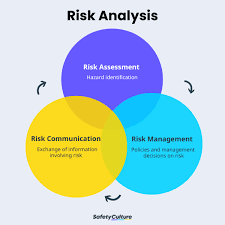Introduction
In recent years, the importance of conducting risk assessments and implementing effective risk management strategies in schools has grown exponentially. From fire hazards to cybersecurity threats, schools need to be prepared for various potential risks to ensure the safety of students, faculty, and staff. This article will explore the process of conducting a school risk assessment, implementing risk management techniques, and managing resources efficiently.
Conducting School Risk Assessments
1. Identifying Hazards: The first step involves identifying potential risks within the school premises. This process should involve input from faculty members, staff, and students to cover all possible hazards.
2. Evaluating Risks: Once potential hazards have been identified, the next step is to assess their likelihood and their potential impact on the school community. Factors such as frequency of exposure, severity of harm, and whether existing measures can prevent or minimize the risk should be considered.
3. Establishing Control Measures: Based on the evaluation of risks, control measures should be designed to reduce or eliminate the identified hazards. These measures may include enforcing safety rules and regulations or installing security systems.
4. Monitoring and Reviewing: Regular monitoring and reviewing of control measures are crucial for ensuring their effectiveness in mitigating risks. This process should involve tracking incidents or near-misses related to identified hazards and refining control measures accordingly.
Implementing Risk Management Strategies
1. Training and Awareness: Educate staff members and students about identifying risks and taking appropriate measures in case of emergencies. Regular training sessions or workshops can be conducted on topics such as emergency evacuation procedures or first aid provision.
2. Response Planning: Schools should have an emergency response plan in place that outlines the steps to be taken in case of various emergencies such as fires or natural disasters.
3. Cybersecurity Measures: Protect sensitive school data by implementing robust cybersecurity practices such as password management, regular software updates, and restricting access to sensitive information or systems.
Managing Resources
1. Allocating Resources: Allocate adequate financial and human resources for maintaining safety standards and implementing risk management measures. Regular budgetary reviews can help school administrators determine whether resources are being utilized effectively.
2. Maintenance and Repairs: Regularly inspect the school premises for any potential hazards resulting from wear and tear or neglect, and schedule repairs or replacements as needed.
3. Contractor Management: If schools opt to use external contractors for services such as cleaning or repairs, ensure contractors follow appropriate safety measures and have a clear understanding of the school’s risk management policies.
Conclusion
Conducting thorough risk assessments, implementing effective risk management strategies, and efficiently managing resources are essential aspects of keeping schools safe environments for everyone. By staying proactive in addressing potential hazards, schools can minimize their exposure to risks and remain a nurturing space where students can grow and learn.




